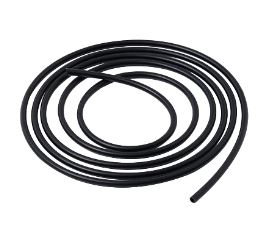Maintaining and cleaning hose pipes in daily life is crucial to ensuring their longevity and efficient performance. Regular care helps prevent issues such as clogs, leaks, or deterioration. Here’s a practical guide for maintaining and cleaning hose pipes used in everyday applications:
1. Daily Maintenance
Visual Inspection
Check for Damage: Inspect the hose for visible signs of wear, cracks, or bulges. Look at both the hose and the fittings.
Inspect Connections: Ensure that all fittings and connections are secure and free from leaks.
Proper Storage
Avoid Kinks and Twists: Store hoses coiled properly to prevent kinking or twisting, which can damage the hose over time.
Keep Out of Direct Sunlight: Store hoses in a shaded area or cover them to protect them from UV damage.
Dry Storage: Ensure hoses are dry before storing to prevent mold or mildew growth.
2. Routine Cleaning
Basic Cleaning
Flush with Water: After each use, especially if the hose was used for watering plants or washing, flush it with clean water to remove any residual debris or substances.
Mild Detergent: If needed, use a mild detergent mixed with water to clean the exterior of the hose. This is especially useful if the hose has accumulated dirt or grime.
Cleaning Steps
Turn Off Water Supply: Always turn off the water supply before disconnecting or cleaning the hose.
Remove Attachments: Detach any nozzles, sprayers, or other accessories before cleaning.
Rinse Thoroughly: Rinse the hose with clean water to remove any soap or detergent residues.
Dry Completely: Allow the hose to air dry completely before storing it to prevent mildew or mold growth.
3. Periodic Deep Cleaning
When to Deep Clean
Heavy Soiling: Perform a deep clean if the hose has been exposed to substances that are hard to remove with basic cleaning.
Odor Removal: Deep clean if there is an unpleasant odor coming from the hose.
Deep Cleaning Steps
Soak in Cleaning Solution: Prepare a cleaning solution with a mild detergent or a specialized hose cleaner. Submerge the hose in the solution if it’s manageable, or apply the solution directly if it’s not.
Use a Brush: For stubborn dirt or residue, use a soft-bristle brush to scrub the hose gently.
Rinse Thoroughly: Ensure all cleaning solution is completely rinsed out with clean water.
Dry: Make sure the hose is fully dried before storing to prevent moisture-related issues.

4. Preventive Maintenance
Protective Measures
Use Hose Guards: Consider using hose protectors or guards at the ends where the hose connects to the faucet or other equipment to prevent kinking.
Avoid Sharp Bends: Ensure that the hose does not bend sharply during use or storage.
Inspect Regularly
Routine Checks: Conduct visual inspections regularly to catch any issues early before they become serious problems.
Replace Worn Parts
Fittings and Nozzles: Replace any damaged or worn fittings, nozzles, or connectors to prevent leaks and maintain functionality.
5. Special Considerations
For Rubber Hoses
Avoid Ozone and UV Exposure: Protect rubber hoses from ozone and UV light to prevent degradation.
Check for Cracks: Rubber can develop cracks over time, especially if not stored properly.
For PVC Hoses
Avoid Extreme Temperatures: PVC can become brittle in very cold temperatures or deform in high heat.
Handle with Care: Be cautious of sharp bends, which can cause kinking or damage.
For Expandable Hoses
Avoid Overstretching: Do not stretch expandable hoses beyond their recommended length to prevent tearing.
Rinse and Dry Thoroughly: Ensure these hoses are fully rinsed and dried after use to maintain their flexibility.
By following these daily maintenance and cleaning practices, you can extend the life of your hose pipes, improve their performance, and ensure they remain in good working condition.

 English
English Español
Español русский
русский












